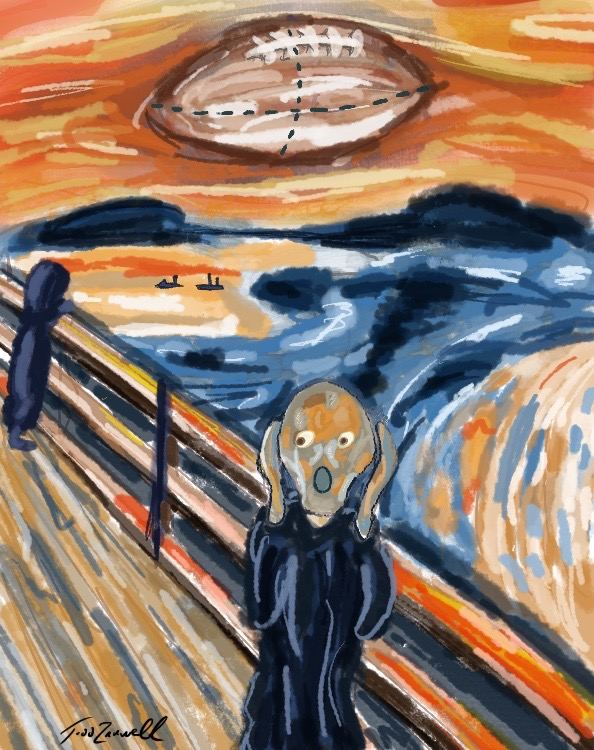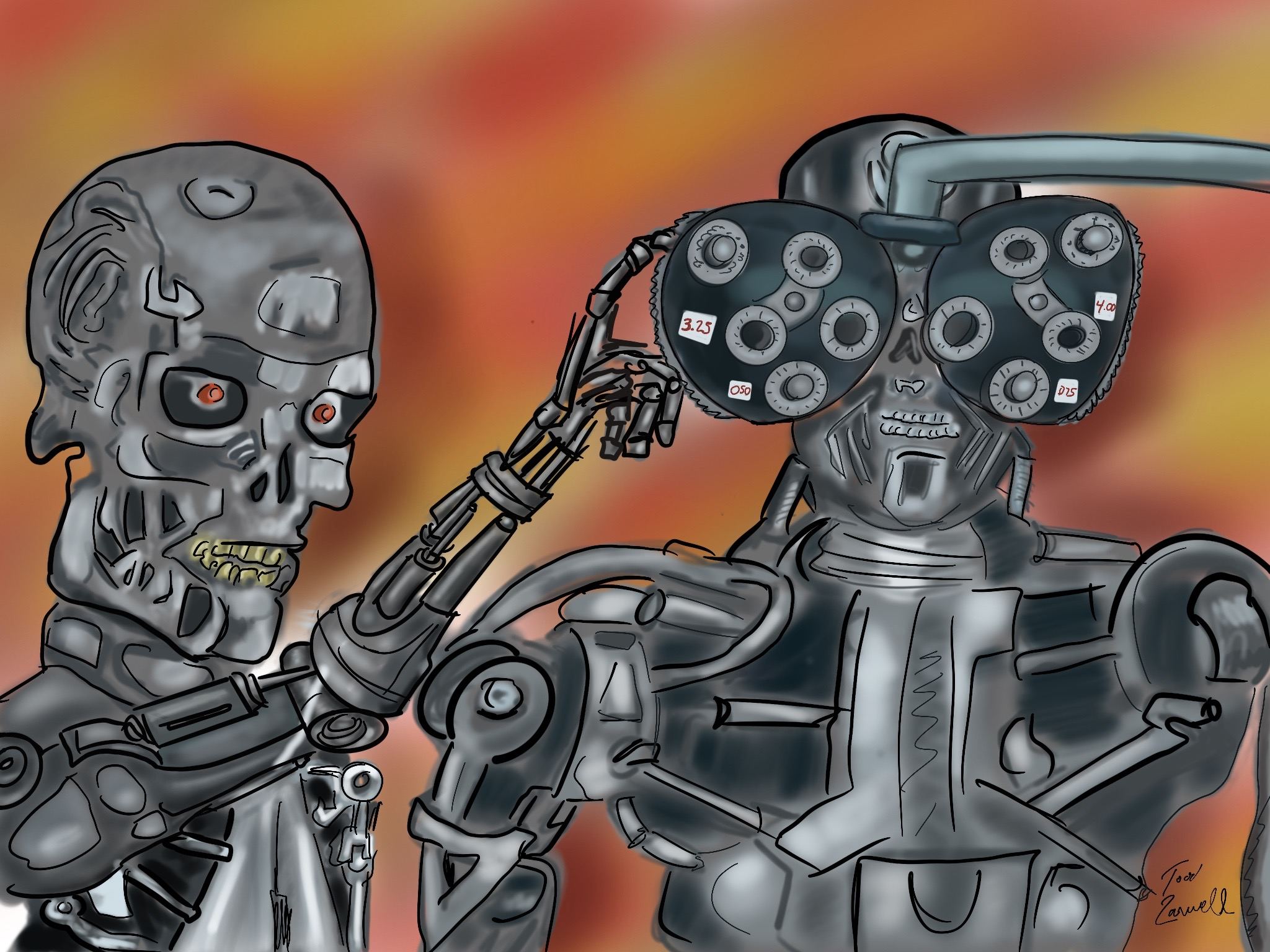What is the duration of the subscription?
You will have access to the Eye Scholar tutorials for 1 year.
I purchased a subscription to an earlier version of this tutorial. Can I use that subscription to access this current tutorials?
Yes.
However, we have changed our membership management software and, as a consequence, you will need to do a password reset using the email address associated with your account.
Of course, you can
contact me if you're running into any problems.
Can I share my login to this tutorial?
Subscriptions are intended for use by a single individual.
I represent a school or residency program. Are group rates available?
Yes.
If you represent a larger group please
contact me.
Does this tutorial depend on Flash?
No. Flash has been on its death bed since 2015 and no modern website should be depending on it. This tutorial uses all modern web standards.
Can I use this tutorial on my iPad or iPhone?

Um, kind of? It is not optimized for use with mobile devices but, since it uses modern web technologies, it will work. The biggest frustration is elements that require dragging (such as spinning an axis control) sometimes gets interpreted as an attempt to scroll your screen.
And on an iPhone? Well, I suppose you could, but you'll be working on a teeny tiny refracting instrument. On second thought, it might be the perfect training tool if you plan on refracting squirrels.
What browsers work best for these tutorials?
Of course, as a lone developer it's impossible to test Eye Scholar in every version of every browser on every platform. However, when I review the technologies used by this application and the standards supported by popular browsers you should be safe using:
- Firefox 77 or greater
- Safari 13 or greater
- Chrome 81 or greater
- Opera 15 or greater
Internet Explorer is not recommended and there may be some limitations to Microsoft Edge.
Of course, if your experiences differs from what I describe here please let me know!
Why are there limitations to the browsers I can use?
The Eye Scholar tutorials make heavy use of SVG images, which allows for smaller file sizes and graphics that look great on both small and large screens. I also make use of CSS filters for styling and for some of the animations. Because these are web technologies that have no or limited support in older browsers, I'm forced to only support browsers that allow me to make these tutorials work the way I want them to!
Can I learn and practice on plus and minus cylinder refracting instruments?
Yes, you can choose to view the tutorials and use the simulators using plus or minus cylinder instruments.
Why do you constantly refer to the instrument as a "refractor" or a "refracting instrument"? Why not call it a phoropter?
I know these terms sound a little awkward and may even be a little confusing. However,
Phoroptor ™ is a registered trademark currently owned by Reichert Technologies and I want to avoid crossing any legal boundaries! If I am granted permission to use the word "phoropter" I will update the tutorial.
BUT WHAT ABOUT ASTIGMATISM?!!!

Ah, yes, the dreaded ’stigmatism. Yes, it makes things infinitely more complicated (for both practitioners and guys who are trying to develope tutorials and simulators), but you can learn and practice on patients with astigmatism.
(Ok, I admit it, the only reason this particular FAQ question exists is so I had a reason to display this picture).
Does this tutorial teach tests such as binocular balance or the red/green duochrome test?
No, at this time the tutorials and simulators are limited to subjective monocular refractions. This is isn't because I feel these tests are not important - I feel they're extremely important - but if I didn't limit the scope of this project I would have never finished it. I do hope to add this content in the future, I just need to figure out how to do it without further complicating the user interface!
I learned (or teach) refracting a little differently than the way you do.
Yes, when I watch other clinicians refract I'm amazed at how many little variations people have in their techniques. Almost all of them are valid, and end up with the same result in the end. Unfortunately, I had to choose one single way to teach refraction and, of course, I chose the one I was most comfortable with.
The most important thing is to understand the underlying concepts behind refractions: Why do we keep the spherical equivalent? How for we search for astigmatism? These tutorials are intended to give you a framework for performing a refraction, but as you gain experience and observe your colleagues you will very likely adopt your own unique method of refracting.
How realistic are the patients?
I made every attempt to make the patients as realistic as possible. Young patients accommodate (and can therefore be over-minused), but presbyopes will have age-appropriate limitations to their accommodation.
Patients don't just say "one was better" or "two was better", but give more realistic responses such as "the other one was better" or "this one sucks" (This is a critical skill for refraction: Making on-the-fly interpretations of what patient responses mean!).
Patients can have reduced vision: One of the biggest challenges for beginners is to be confident with your results, even if you're not achieving 20/20 (6/6) vision.
Can I make a virtual doctor do a refraction on a virtual patient?

At one point I tried to develop a feature where you could enter virtual patient's glasses prescription, and then watch a virtual doctor refract that patient. I thought it could make for a nice learning experience. However, it was proving to be a tad difficult.
More importantly, though, I was a little afraid that creating robots that refract other robots might be the first step towards ushering in a robot apocalypse. I decided I wasn't willing to be responsible for that.
Can I learn and practice on plus and minus cylinder refracting instruments?
Yes, you can choose to view the tutorials and use the simulators using plus or minus cylinder instruments.
Can I learn and practice retinoscopy with trial lenses?
Yes. Learning to do retinoscopy outside of the refracting instrument is a critical skill. Sometimes patients cannot be positioned behind an instrument, either because they are not physically able or because they lack the attention needed.
In addition, you may find yourself in situations were you need to assess refractive error using only the instruments you can carry with you.
Am I only able to do retinoscopy on my patient's right eye?
At this time, yes, you can only practice retinoscopy on one eye. I hope to add the ability to do this test on both eyes in the future, but it took me forever to get all the streaks, reflexes, trial lens animations, refracting instrument controls, and the tutorial animations to all line up and work in sync. I knew trying to get these things to work for the left eye would further delay getting this project to a publishable state, so I made the decision to just allow retinoscopy on one eye, for now.


